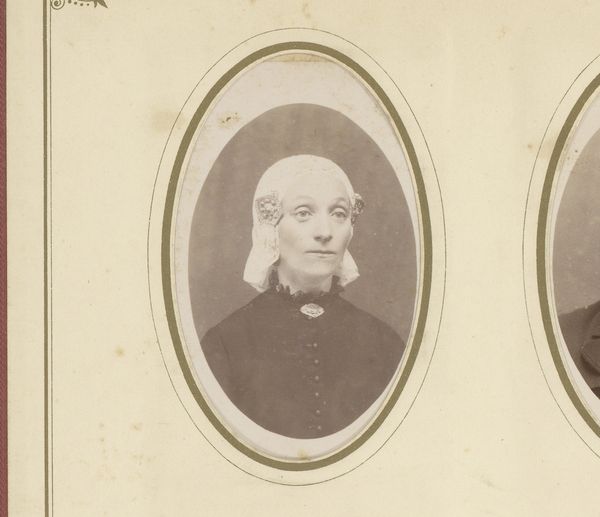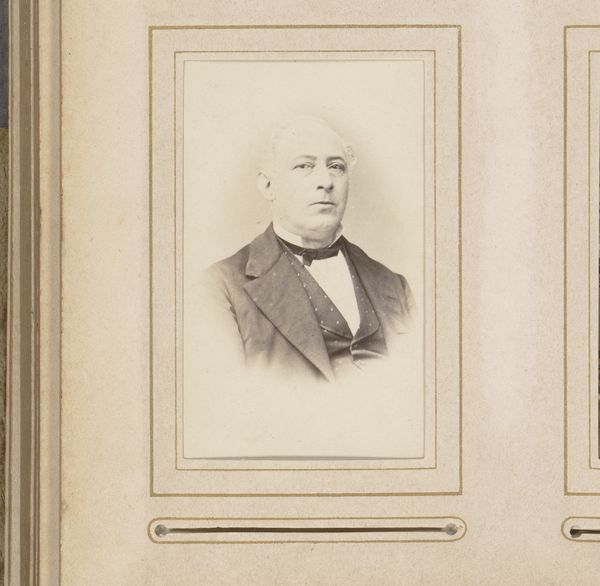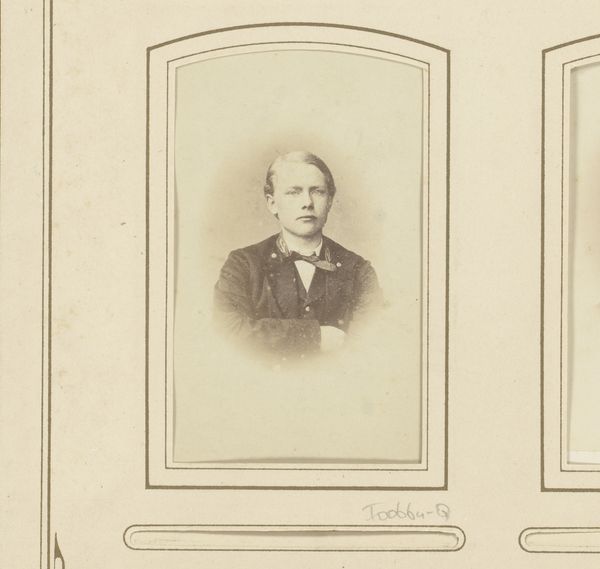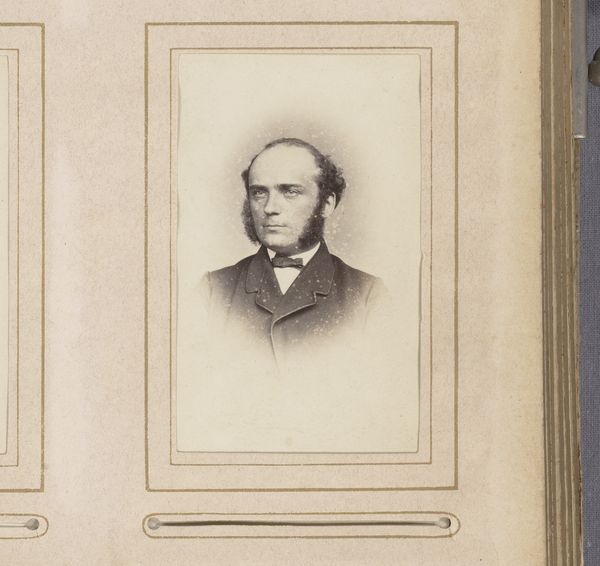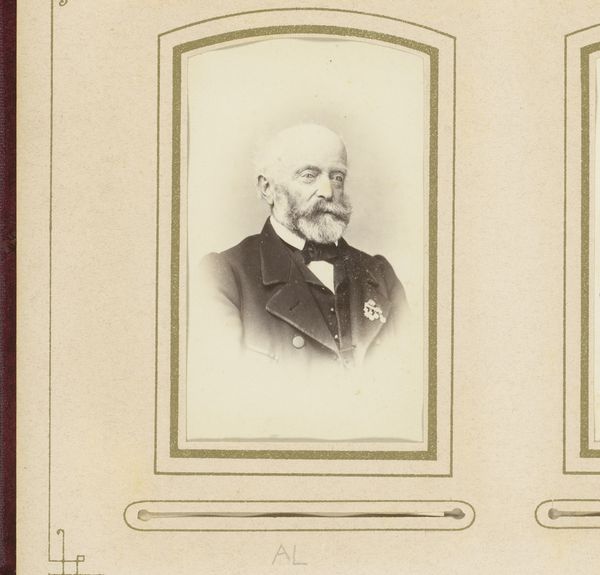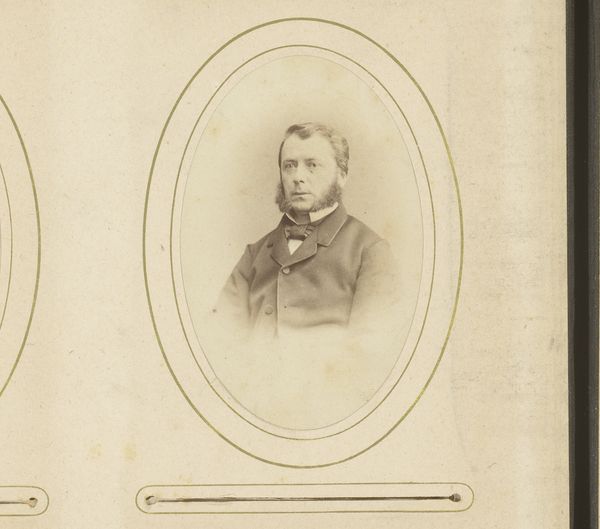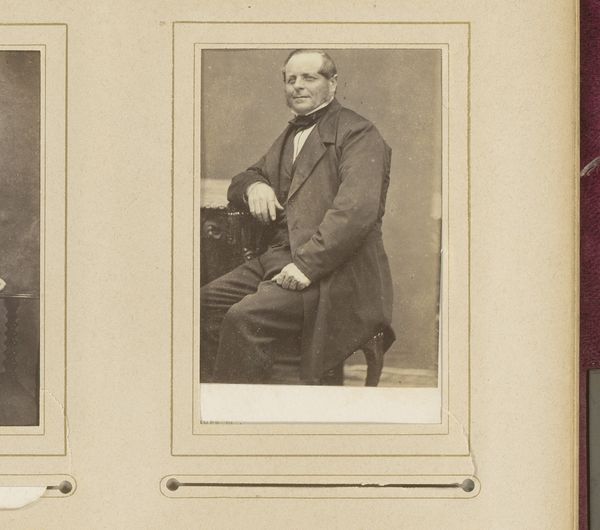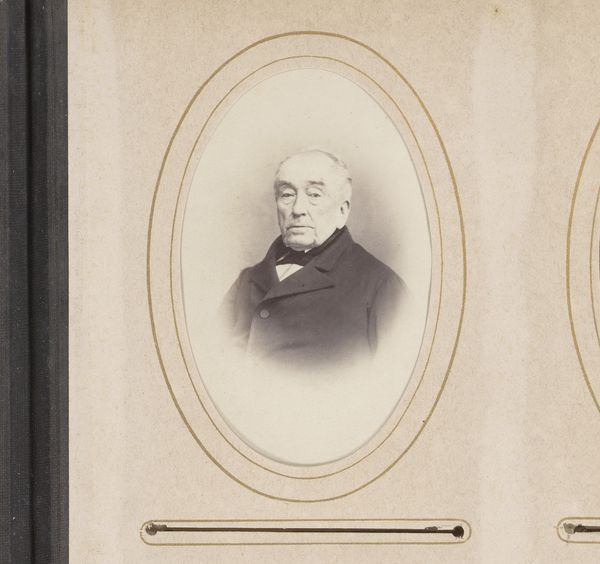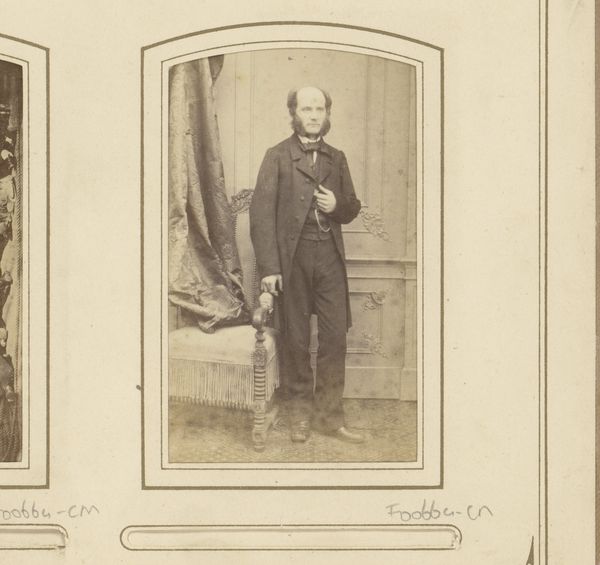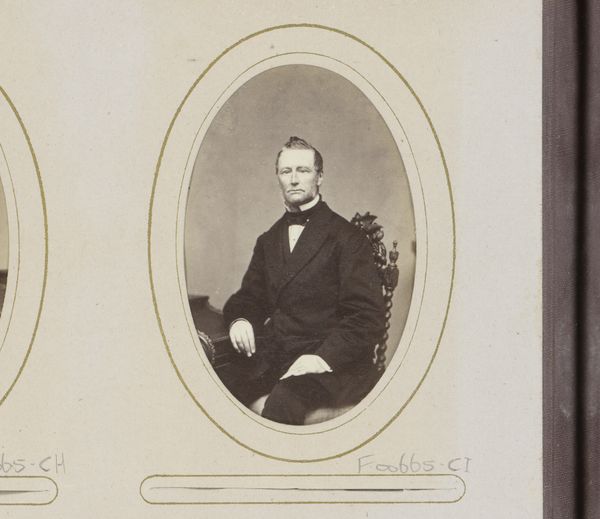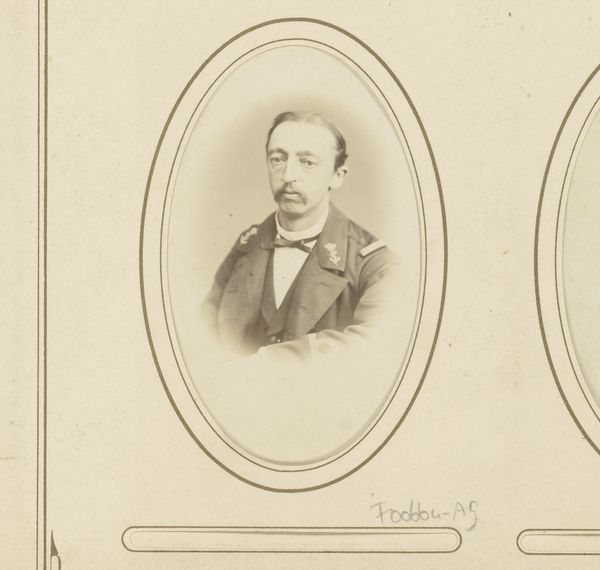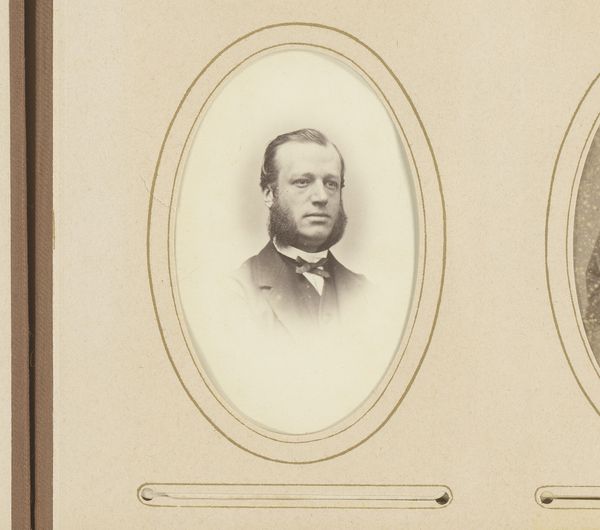
#
aged paper
#
toned paper
#
light pencil work
#
photo restoration
#
parchment
#
historical photography
#
old-timey
#
yellow element
#
19th century
#
gold element
Dimensions: height 85 mm, width 50 mm
Copyright: Rijks Museum: Open Domain
Curator: This is a portrait of an old man with sideburns, captured sometime between 1860 and 1875, likely by J. Häuselmann. Editor: It’s immediately striking how this image emanates a certain stillness and gravity, almost as if time itself has slowed within this frame. The composition centers on the man's face, emphasizing his serious expression. Curator: The aging process has been kind, each wrinkle and line speaks to his unique life and historical period. What details can you infer from his dress and grooming? Editor: His meticulous grooming and formal attire, the tailored jacket, the neatly tied bow tie—they all suggest a certain status, perhaps an established professional or a member of the upper class. Semiotics could interpret these items as social signals indicative of bourgeois life. Curator: Indeed. Bow ties and jackets became very popular, communicating class and refinement during the mid-19th century. These material signs echo through other formal portraits of this period. How would the viewers of the time understand this imagery, and how can we compare these visual symbols to the modern era? Editor: Viewers of that era likely interpreted those signs through the same framework that permeated their lives. Modern audiences are accustomed to accessing and interpreting photographs differently, however, now informed by our vastly expanded historical consciousness. The subtle toning adds depth, yet I think a bit of restoration may have taken place... Curator: Agreed, these photographs bear traces of light pencil work, possibly employed for restoration. As we observe such artistic approaches, we realize we're not only examining an individual from the 1800s but also glimpses of an entire period—what aspects of this individual's imagery strike you? Editor: It's tempting to weave narratives about his background, but that leads to personal interpretations that divert from concrete qualities. Looking back now at the tonality, structure and arrangement are, quite simply, perfect. The subject dominates through central placement and contrasting darkness against muted gold surrounds. Curator: Fascinating thoughts. This piece serves as an archival snapshot—a lasting glimpse into a bygone time through carefully preserved photographs that bridge our eras. Editor: Well said! Considering what we uncovered about tone and pictorial choices, even the tiniest framed image can open many doors onto ways of seeing.
Comments
No comments
Be the first to comment and join the conversation on the ultimate creative platform.
